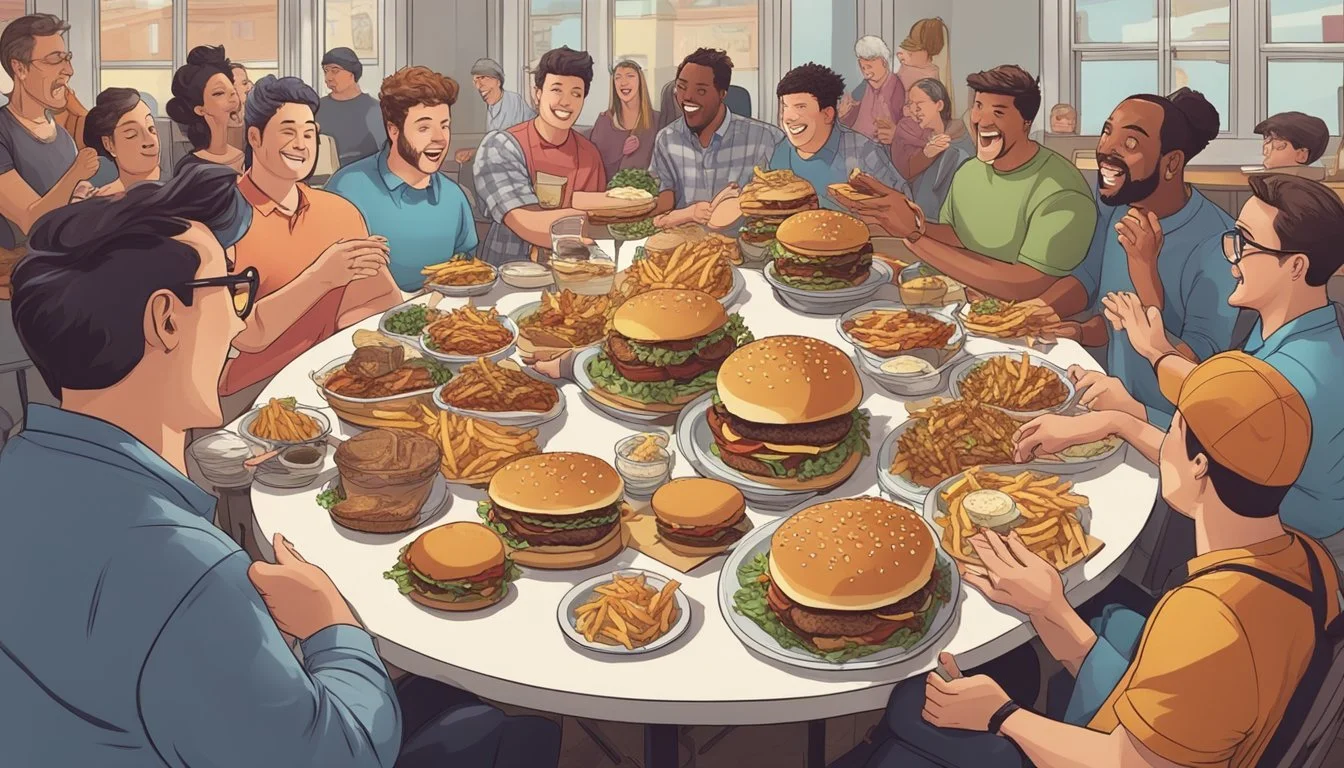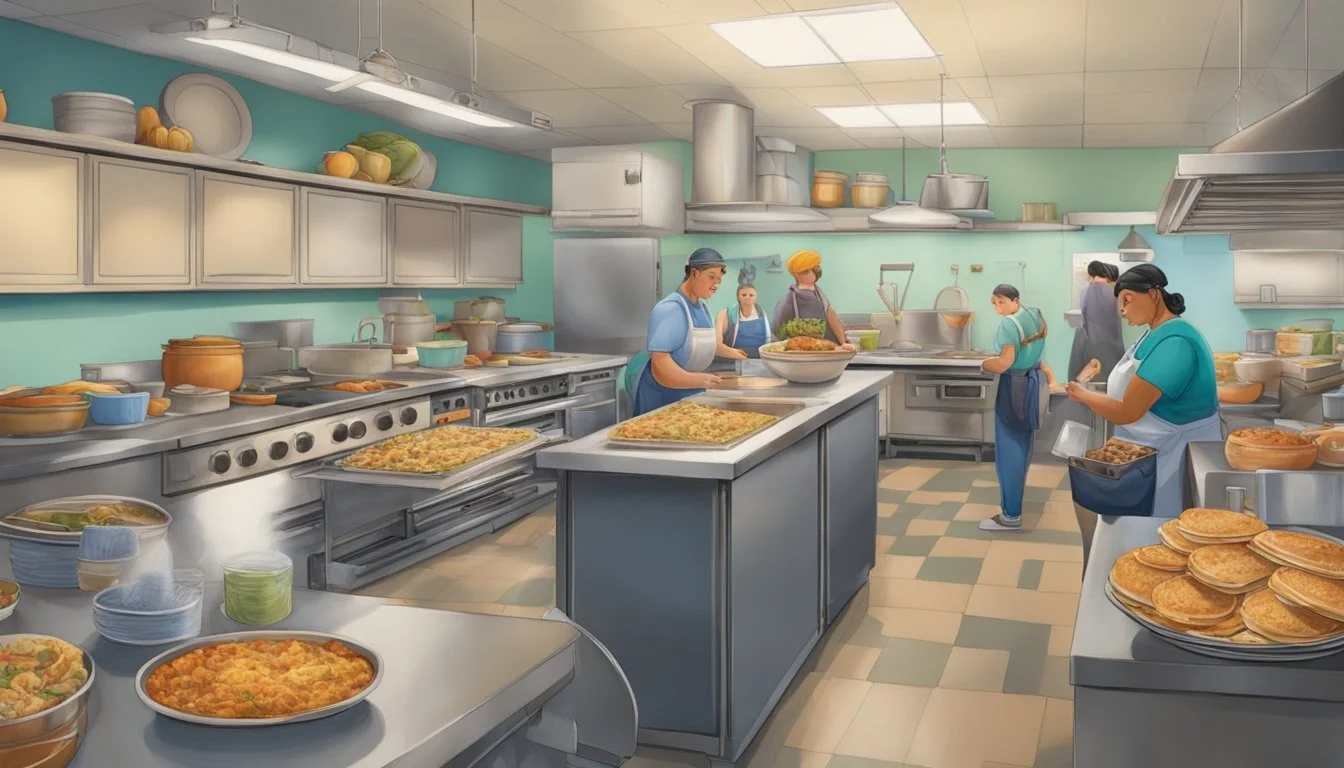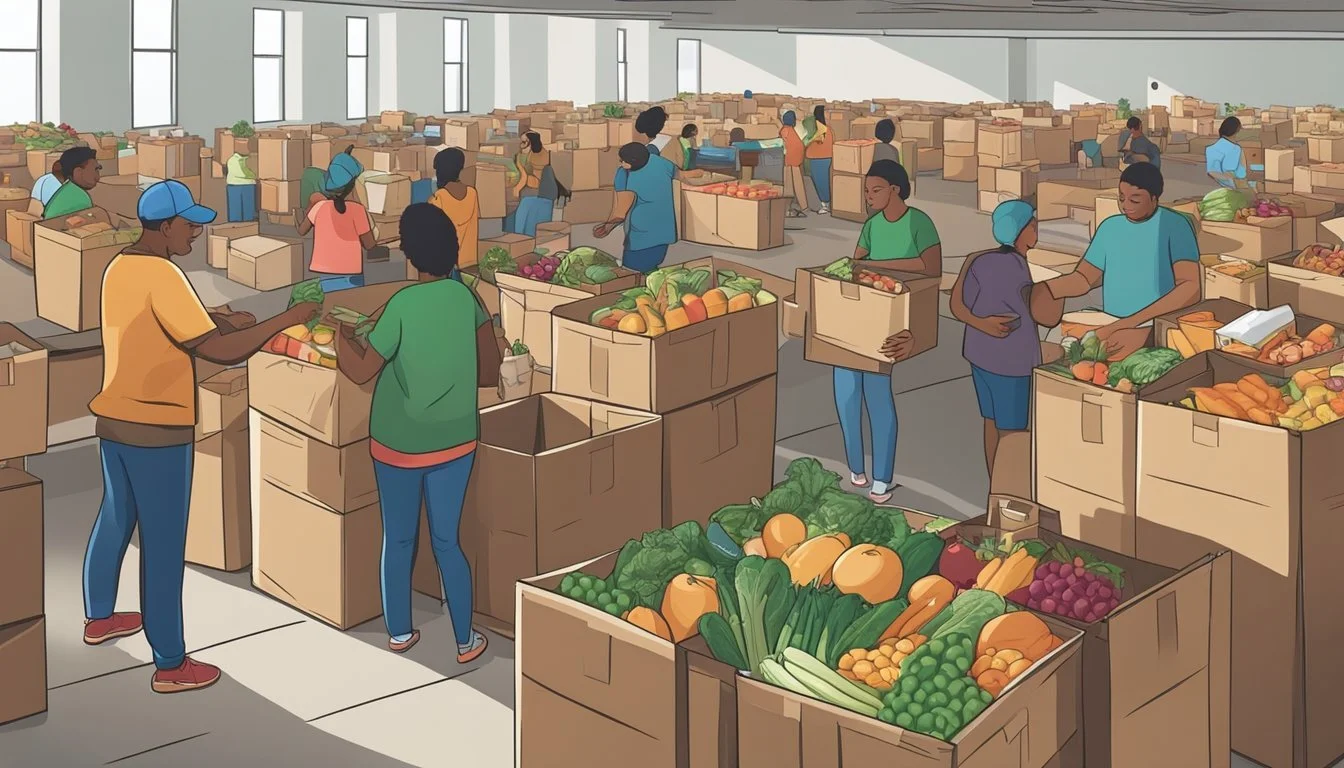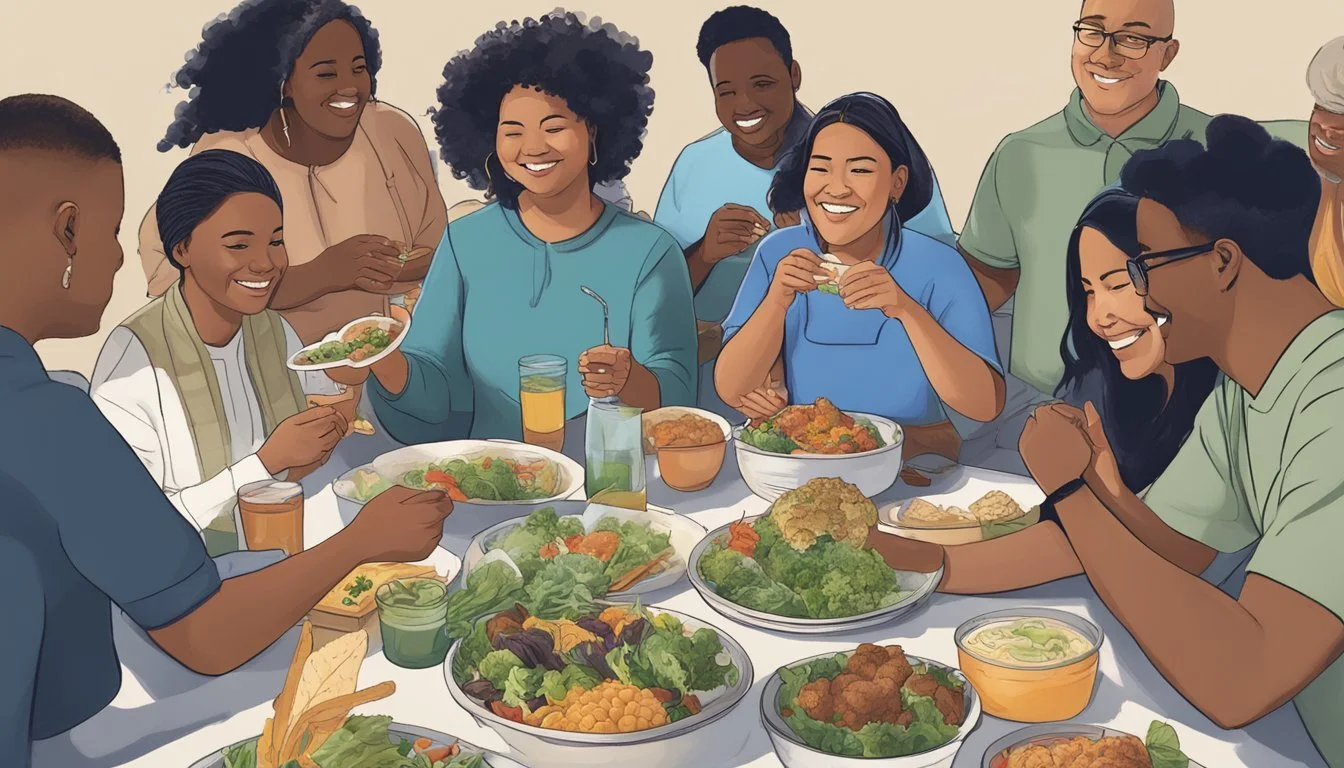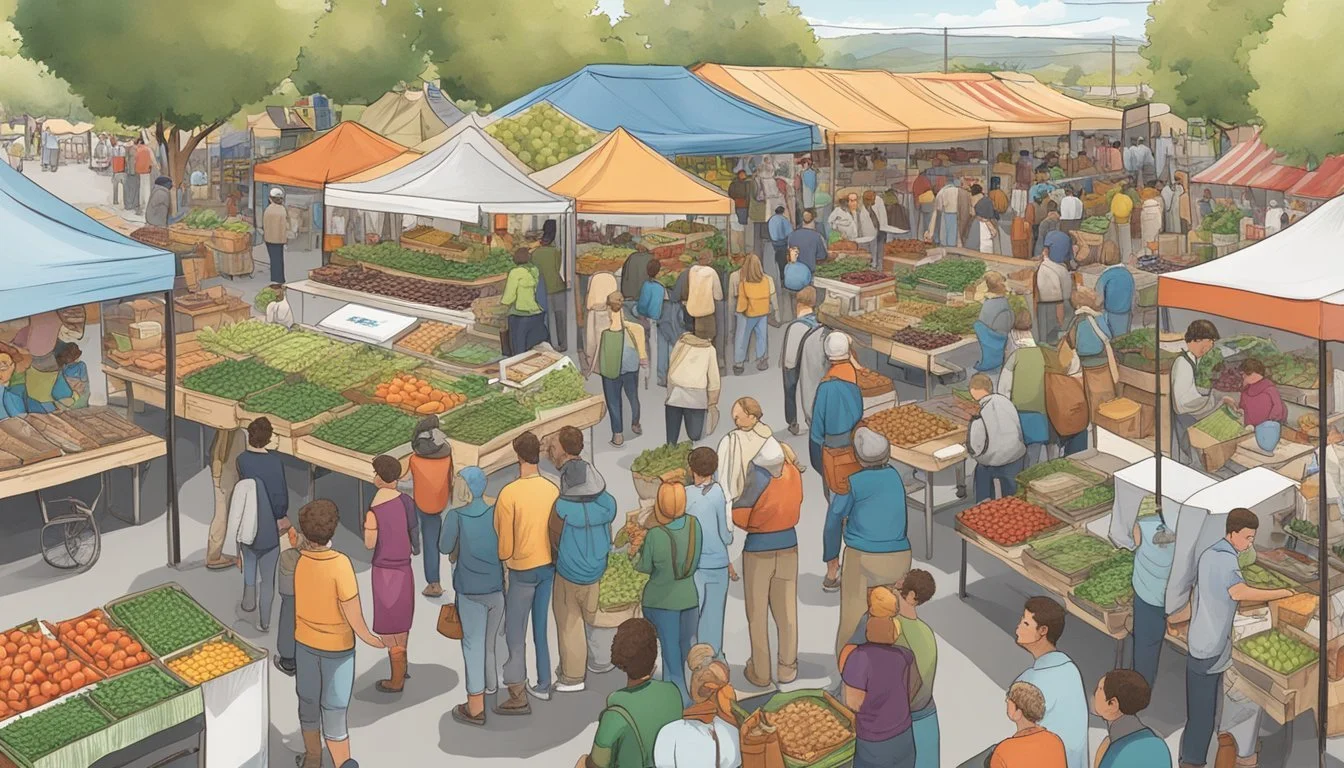Utah Food Challenges
A Guide to the State's Most Daunting Culinary Contests
Utah is home to a variety of food challenges that cater to those looking to test their eating prowess. From towering burgers to spicy wings, these contests not only push the limits of appetite but also serve as a unique way for restaurants to create buzz and attract the daring. Praised by locals and visitors alike, these challenges foster a sense of community and entertainment, often rewarding the victor with meals on the house, coveted T-shirts, or even a spot on the establishment's wall of fame.
Gaining awareness about Utah's food challenges reveals a tradition steeped in local culture and culinary extremities. At the heart of many of these gastronomic feats are iconic dishes that capture the spirit of the state, such as the mammoth Deuce Burger in Layton, which promises a meal free of charge to those who conquer it in time. Similarly, Ogden’s No Frills Diner offers a substantial omelet challenge that combines a medley of ingredients for a formidable morning meal. Each challenge is uniquely tailored to test knowledge of one's own limits and understanding of what it means to truly enjoy food in the Beehive State.
Participation in food challenges across Utah not only requires a voracious appetite but also an attitude of determination and a bit of strategy. For many, these culinary trials are not just about enjoying large quantities of food but are a testament to human tenacity and the thrill of competition. They serve as a testament to the larger-than-life dining experiences that can be found throughout Utah, fostering a heightened sense of awareness and appreciation for the state's diverse food scene.
History of Food Challenges in Utah
Utah's landscape of food challenges offers a mix of historical significance and contemporary trends, tracing back to a hearty spirit of competition that has evolved into a well-embraced aspect of the state's food culture, particularly in Salt Lake City.
The Origin of Competitive Eating
The tradition of competitive eating in Utah is not merely a product of modern foodie culture; it has roots that extend back into local festivities and communal competitions. Historical accounts suggest that even before the digital hyper-connectivity of modern times, residents of Utah indulged in food challenges as a form of entertainment and community bonding. Salt Lake City, as Utah's capital and a cultural hub, has hosted numerous such events, contributing to the rich tapestry of the state's traditions in competitive eating.
Rise of Food Challenges Post-Pandemic
Following the global pandemic, there was a noticeable resurgence in food challenges across Utah. These events became opportunities to reconnect communities and revive local businesses, especially in hospitality and dining sectors. Restaurants in various cities, including Salt Lake City, began to innovate and advertise unique food challenges as a means to attract diners eager for new experiences after extended periods of isolation. This post-pandemic boom underscored the historical significance of these challenges, as they became emblematic of resilience and the return to social normalcy in Utah.
Popular Utah Food Challenges
Utah offers a variety of food challenges that cater to the bravest and most ambitious eaters. These challenges range from colossal burgers to spicy wings, testing both the speed and capacity of participants.
Burger Challenge
Lucky 13 in Salt Lake City dares challengers to conquer their monstrous Lucky 13 Burger. Participants must devour this behemoth, which includes a mound of beef and a variety of toppings, within a set time limit to claim victory Lucky 13 Burger Challenge. Similarly, Burger Stop in Layton invites patrons to tackle the Deuce Burger, a 2-pound beef patty adorned with bacon, cheese, and onion rings Burger Stop Challenge.
Chubby Challenge
Chubby's Neighborhood Cafe in Pleasant Grove puts forward the Chubby Challenge. This daunting task requires consuming a 1-pound burger and a pound of french fries in under 15 minutes to secure a spot on their Wall of Fame Chubby's Challenge.
24 Inchers Club
Firehouse Pizzeria presents pizza enthusiasts with an invitation to join the exclusive 24 Inchers Club. Challengers must eat a 24-inch pizza in a rapid-paced setting to emerge triumphant and earn a place in the club.
Wing Challenge
The Rocky Mountain Wingshak offers the Wing Challenge, where contenders aim to consume a dozen of their spiciest wings without yielding to the heat. Completing this fiery trial earns a proud place on their notorious Wall of Flame.
Omelet Challenge
No Frills Diner located in Ogden challenges breakfast lovers to their Omelet Challenge, which consists of a 2-egg omelet full of hearty fillings, coupled with hash browns, a pancake, and a drink that must be finished within 20 minutes No Frills Diner Omelet Challenge.
Impact of Food Challenges on Local Communities
Food insecurity and its challenges affect local communities in Utah in various ways, influencing the economy and social well-being. These challenges open up avenues for community involvement and transformation of neighborhoods into hubs of culinary tourism.
Boosting Local Economy through Food Challenges
Food challenges often prompt the creation of charity events and the formation of organizations like the Utah Food Bank, which plays a significant role in gathering resources for those in need. These efforts not only provide immediate relief for vulnerable populations, including children, but also stimulate the local economy by sourcing food and services from within the state. For example, frequent donations from individuals and businesses bolster the operations of food assistance programs, ensuring a consistent flow of capital and support back into the community.
Creating Foodie Destinations in Utah
Utah's unique culinary scene can benefit from food challenges as they foster the development of local restaurants into foodie destinations. By highlighting local cuisine and produce, restaurants can attract both residents and tourists, enhancing the state's reputation as a center for innovative and authentic food experiences. This, in turn, promotes local agriculture and sustains jobs, providing a robust platform for economic growth and cultural exchange.
Nutritional Implications of Food Challenges
Food insecurity and the related challenges in Utah can lead to complex nutritional issues, which encompass both the underconsumption of nutritious foods and the overconsumption of low-quality, unhealthy items, potentially leading to obesity.
Promoting Overconsumption
Food challenges may paradoxically push individuals towards overconsumption of foods high in calories but low in nutrient quality. In Utah, a significant number of households with limited resources may opt for more affordable, calorie-dense foods that are often high in sugar, fat, and salt, due to their lower cost and longer shelf life. This trend is reflected in the rising rates of obesity, as individuals consume more of these unhealthy items to feel full, neglecting the nutritional quality of their meals.
Addressing Health Concerns
Confronting the nutritional implications of food insecurity involves recognizing and acting upon the health concerns associated with unbalanced diets. Initiatives to address these concerns focus on improving access to nutritious foods. Ensuring that all Utah residents have the means to purchase and consume high-quality, nutrient-rich foods is pivotal in preventing the associated health issues, such as obesity and chronic diseases. Collaborative efforts, such as the work by the Utah Food Coalition, aim to unify stakeholders to fortify the state’s local food system, enhancing the availability of nutritious options for those in need.
Contribution to Food Awareness and Insecurity
Utah faces unique challenges in the realm of food security largely influenced by factors such as inflation and family demographics. Efforts to mitigate these challenges focus on raising public awareness and supporting hunger relief initiatives through various programs.
Raising Awareness through Challenges
Utah has established entities like the Utah Food Security Council aimed at enhancing economic stability and increasing public understanding that ending hunger is crucial for the wellbeing of the state's residents. Specific campaigns highlight the disproportionate impact of food insecurity on families with children, emphasizing the need for comprehensive strategies. Efforts include the promotion of the Supplemental Nutrition Assistance Program (SNAP), as well as local child nutrition initiatives.
Supporting Hunger Relief Efforts
Nonprofits and state programs solicit donations and volunteer support to combat hunger in Utah. They distribute resources to those in need, often focusing on nutritious and culturally appropriate food. With the rise of inflation, these organizations play a vital role in providing relief to families who may not have adequate access to food. Coordination with statewide bodies ensures that food assistance efforts are effectively directed to the communities that require them most.
Integration with Social Initiatives
Uplifting communities in Utah through social initiatives involves strategic partnerships and awareness campaigns. These efforts ensure Utahns have improved access to healthy food while supporting educational growth and job training.
Collaborations with Nonprofits
Nonprofits play a crucial role in alleviating food challenges in Utah. The Create Healthy Pantries initiative collaborates with local food pantries, integrating a toolkit to optimize the visibility and availability of nutritious foods. Similarly, Waste Less Solutions is instrumental in fostering volunteer networks that redirect food surplus to those in need, embodying an approach that values resourcefulness and community cohesion.
Educational Campaigns
Educational programs are instrumental in creating long-term solutions to food insecurity. Through public education and advocacy, entities like the Food Justice Coalition strive to address and inform about the root causes of food scarcity. These campaigns are multipronged, engaging students, academicians, and community members in job training and educational efforts, explicitly tailored to enhance self-sufficiency and food-related knowledge among Utahns.
Challenges for Restaurant Owners
Restaurant owners in Utah are navigating a transformative landscape, grappling with adapting to changing customer behaviors post-COVID-19 and finding the right balance between providing entertaining food challenges and upholding their responsibilities.
Adapting to Post-COVID-19 Demand
With the onset of COVID-19, restaurant owners faced a surge in takeout services as in-person dining took a backseat. This shift required a rapid adaptation of business models, with a focus on packaging and maintaining food quality during delivery. They worked tirelessly to modify their operational strategies to cater to this new demand, often implementing online ordering systems and enhancing their hospitality services to ensure customer satisfaction. These changes were compounded by pervasive supply chain issues, leading to unpredictability in inventory and pricing, forcing restaurants to innovate continuously.
Balancing Entertainment and Responsibility
Food challenges have long been a staple in the Utah dining scene, offering a unique form of entertainment that can draw in crowds. However, owners must balance this allure with the responsibility of ensuring patrons’ health and safety, as well as mitigating food wastage. Establishments such as No Frills Diner and Chubby's Neighborhood Cafe have become adept at striking this balance, creating challenges that are engaging but also manageable. It is crucial for owners to design food challenges that are not only fascinating and enjoyable but also reflect a conscientious approach towards consumption and waste.
Ensuring Quality and Safety
In Utah, the primary objectives in the realm of food quality and safety include guaranteeing the sufficiency and affordability of produce, eggs, butter, and vegetables, while maintaining rigorous safety standards.
Regulations and Best Practices
Regulatory frameworks in Utah are designed to ensure that fresh produce, eggs, butter, and vegetables meet safety and quality benchmarks. The Food Safety Challenges and Regulations in Retail and Foodservice article discusses the role of the FDA's Food Code in safeguarding public health. Utah's adherence to these guidelines assures consumers about the safety of the food they purchase. Businesses must comply with best practices for handling and preparation to prevent contamination and maintain the integrity of food products.
Sourcing Ingredients
The quality and safety of food in Utah also depend on the sourcing of ingredients. Local farms are crucial for providing affordable and fresh produce. Implementing safety measures from the point of sourcing includes:
Regular inspections of farms and facilities.
Traceability systems for eggs, butter, and vegetables to ensure each item is trackable from farm to table.
Establishing partnerships with reputable suppliers committed to quality and safety standards.
This strategic sourcing is essential to offer food that is not only safe to consume but also sufficient in quantity to meet the demands of Utah's population.
Future of Food Challenges in Utah
The landscape of food challenges in Utah is poised for innovation and engaging community trends. As societal focus shifts towards sustainable practices, event organizers are creatively adapting to include eco-friendly measures. These might be seen through the use of locally sourced ingredients or zero waste initiatives during the challenges.
Trends in the food challenge arena tend to reflect a growing awareness around health and environment. Future events could see a rise in plant-based challenges, tapping into the popularity of vegetarian and vegan diets. Additionally, the integration of technology is likely to enhance the experience, with apps for live tracking of participant progress or interactive leaderboards.
Community engagement remains a cornerstone of food challenges in Utah. The future points towards increased collaboration with local food banks, such as those described by Fox13, and nonprofits to combine the competitive spirit with charitable causes. This symbiosis could potentially amplify participation rates and public interest.
Finally, innovations may include diverse food challenge formats that cater to a broader demographic. New categories, such as "family-friendly" or "team-based" challenges, could emerge, making these events more inclusive. With an eye on global culinary trends, Utah's food challenges may incorporate international cuisines, showcasing the state's culinary diversity and adaptability.

